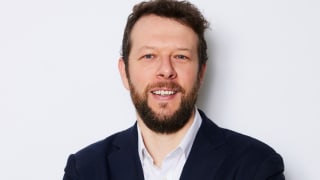Re-imagining Mississauga's place brand identity
How do you re-brand a city successfully? Thirty years on from the creation of their original brand, the City of Mississauga decided to relaunch their place brand strategy to bring their identity in line with the diverse population of the city. But how have they made this ambition a reality? David Ferreira, Manager, City Marketing and Brand Research, City of Mississuaga shares his story of the re-branding of the City of Mississuaga.
Can you give us a quick understanding of how your organisation has changed over the last five years?
When we first embarked on the development of our current brand 5 years ago, our first big challenge was shifting the brand focus from it being a corporate identifier to a true place brand for the City of Mississauga and building a brand identity for Mississauga as a destination of choice for residents, workers, employers, visitors, students and more.
Mississauga’s brand was developed in 1986 and hadn’t been updated on almost 30 years. Over that time the city had seen dramatic changes. The population of the city had more than tripled and become more culturally diverse – with over half of the city’s residents now being born outside of Canada. During this time Mississauga became Canada’s sixth largest city and a key economic centre with over 54,000 businesses and 62 leading Fortune 500 companies. We came to the realisation that the brand perception of Mississauga hadn’t kept pace with the current reality of city it is today.
Our new brand has been a catalyst for creating stronger consistency in how we and our partners communicate and promote the City of Mississauga. I believe that having a shared common understanding of Mississauga’s brand story has been the greatest benefit of our brand.
Together these efforts have been fundamental in changing people’s perception of Mississauga as more than a city next to Toronto but as a distinct modern, vibrant and innovative city. Mississauga continues to grow and transform itself into an increasingly, diverse and thriving urban centre.
And how do you anticipate your organisation evolving to meet the challenges of the new decade?
When we launched the brand one of the main concerns that was often brought was how we would integrate the brand internally and externally. Stakeholders wondered whether they needed to change how they promoted and communicated their particular business area to align with the new brand.
At the time we emphasised that consistency will help the City as a whole to build and strengthen its brand identity – that this will, by extension support and help promote their content as well. This single tone of voice was then communicated and shared across all of our tactics and channels.
To support wider brand integration and consistency we recently launched a City Marketing Committee. This group brings together all of the Marketing Managers and representatives across the City to discuss how to better collaborate and align our marketing and promotional efforts.
I think in the future we will continue to grow and expand our efforts to foster and promote greater collaboration and build stronger partnerships to promote Mississauga as a city to live, work and play.
We’ve seen an increasing number of destinations exploring alternative sources for funding. Has the funding model for your organisation transformed at all?
As a municipality our main source of funding is combination of property taxes and user fees. However on April 1, 2018 the City of Mississauga introduced a Municipal Accommodation Tax (MAT). This has created a new stable source of funding for the city’s tourism efforts going forward that will allow us to invest in tourism promotion and programming, such as events and festivals.
What do you consider to be your single biggest challenge currently?
I think understanding and fully appreciating that a place brand is an extremely complex system is a big challenge. There are so many variables that influence a person’s perception of a city or place – and most of them are out of your direct control. In this type of environment I think all place brands need to focus on building greater resilience to strengthen their ability to respond to any unforeseen situations that could impact your brand.
What – if any – were the difficulties with getting support from other key stakeholders in responding to this challenge?
We were very lucky at the City of Mississauga. We had a large and engaged community of stakeholders who were passionate about building a strong brand for the city. We had over 100 internal and external stakeholders agree to attend four individual half day sessions over the summer to support the development of our new brand.
Having said that, it did take a significant time investment to ensure stakeholders were able to effectively participate in all of the sessions. We held webinars, supplementary sessions, conference calls and a host of other online and face-to-face tactics to work around individual schedules and conflicts. I think this commitment to ensure all stakeholders had the opportunity to stay informed and provide feedback and input helped foster even greater engagement and support for the project.
If you could rewind and do it again, is there anything you would have done differently?
I think the process we undertook was very rigorous and robust with a great deal of research and stakeholder involvement.
I don’t think you can ever engage your stakeholders too much so I think I would have sent a little more time engaging and involving stakeholders. However we also had some aggressive timelines
Are you exploring collaborative possibilities with another destination? If so, who and how?
We realise that place brands do not operate in isolation. An individual’s perception of a particular city are influenced by those of the cities around it, the region that it is located in and that of the country as a whole.
This relation and interdependency by definition requires any place brand to seek partnerships, co-promotional opportunities and partnerships. As a result we currently work very closely with a number of external partners and will continue to seek occasions for us to partner and collaborate with other organisations.
Why is it important for city governments, destination marketing organisations and investment promotion agencies to share place branding best practice at events like City Nation Place?
I don’t think there is any better use of a person’s time that to learn from experts and practitioners. The ideas that are discussed and shared are ones that have been tested in real world situations. The positive and negative impacts and outcomes are real and the solutions that have been employed are as well.
Sharing best practices also helps to build stronger networks and can develop a community within an organisation. Employees can provide helpful insights which boost employee efficiency and help businesses in cutting down costs and time with the right information search. Integrating and sharing best practices into the philosophy of a business can encourage transparency important for organisational accomplishment.
And lastly, if you had an unlimited budget, what’s the first thing that you would implement?
A key part of Mississauga’s brand reputation is strong fiscal management and ensuring that we allocate our resources effectively and efficiently. We think we’ve achieved a good balance in continuing to work on implementing the brand very methodically – leveraging existing budgets and planned opportunities. The brand acts as a catalyst for us to be much more proactive with integrated marketing and communications for the city. We have a multi-year horizon to work with and the brand helps people understand how to work with these kinds of opportunities.
How you implement and promote a brand is as important to a place brand as the content of those promotional efforts. As another Canadian, Marshall McLuhan, once said “the medium is the message”. In other words, the choices we make in promoting our place brands say as much or more about our brand then the words we use to convey that message. Therefore, I don’t think that we would operate very different if we had an unlimited budget as it won’t be aligned with our brand as a City.









